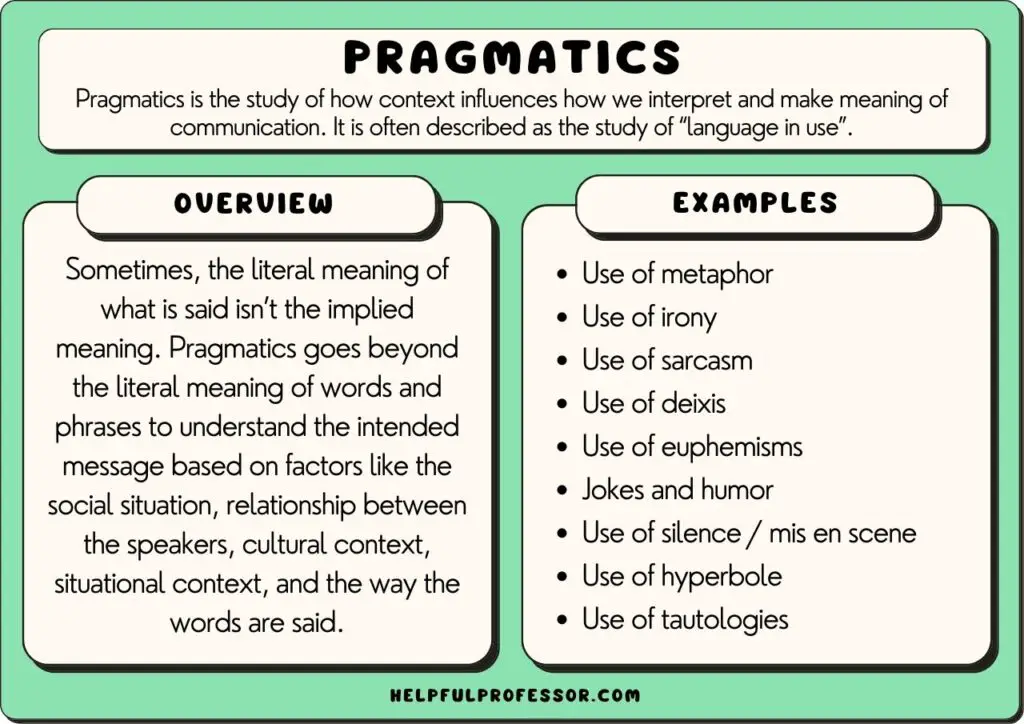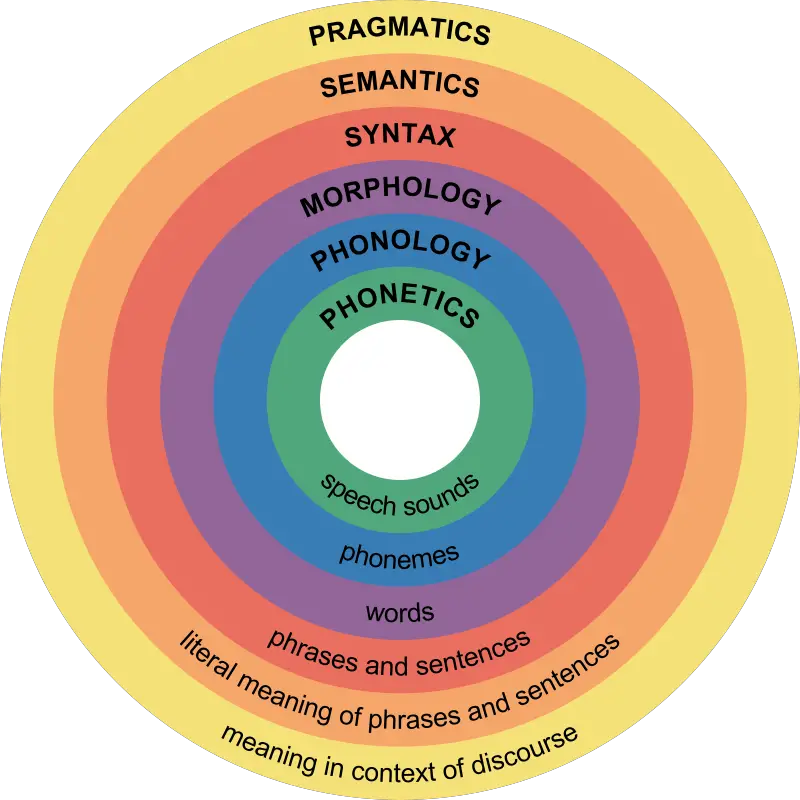Welcome to a world where language transcends mere words. Pragmatics and core linguistics are two pillars that uphold the realm of communication. While core linguistics focuses on the structure and rules of language, pragmatics delves into the contextual and social aspects. Together, they form a dynamic connection that shapes every conversation.

Table of Contents
The Core of Linguistics: Structure and Rules
Core linguistics, often referred to as theoretical linguistics, is concerned with the fundamental elements of language. It explores the intricate web of syntax, semantics, and phonetics. Syntax deals with the arrangement of words to form meaningful sentences, while semantics dives into the study of meaning. Phonetics, on the other hand, focuses on the sounds of language. This branch of linguistics provides a foundation, a set of rules that governs language usage.
Pragmatics: The Contextual Mastermind
While core linguistics establishes the rules, pragmatics adds the context. It recognizes that meaning is not solely derived from words and grammar, but also from the situational and social factors. Pragmatics explores the concept of speech acts, where the intention behind a statement holds significance. It also delves into the realm of implicature, where meaning is conveyed indirectly. Without pragmatics, language would be a static entity, devoid of the richness it possesses.
The Interplay: Pragmatics and core Linguistics
The relationship between core linguistics and pragmatics is one of interdependence. Core linguistics provides the structure, the building blocks of language. Pragmatics, in turn, takes this structure and breathes life into it. It adds the nuances, the subtle variations that make communication dynamic. Without core linguistics, pragmatics would lack a foundation. And without pragmatics, core linguistics would be a mere abstract concept, disconnected from the reality of language usage.
Linguistics is formally defined as the scientific study of language and its subfields, i.e. phonology, lexis, syntax and semantics are often referred to as ‘core linguistics.’ Already we have endeavoured to explain the interaction of pragmatics with these subfields by pointing out the mediatory roles pragmatics plays in providing answers associated with meaning in relation to the context, especially where these subfields have failed to relate meaning to social life.
For instance, the formal semantic assumption that the meaning of a sentence is to know the conditions under which the sentence is true or false does not capture all we mean by meaning; hence the distinction between semantics and pragmatics; while the questions of truth and falsity (truth conditionality) is a matter of semantics, pragmatics handles the rest, especially about the judgements that a speaker makes in his decision about what to say, how to say it and when to say it. As a matter of fact, pragmatics tends to simplify semantic analyses.
At the level of grammar, we noted that speakers/writers are not always governed by lexical or syntactical rules. Indexical references/social deixis that pose problems to specialists in morphology and grammar are explained in terms of implicatures. A sentence such as: “I am speaking to us” where ‘us’ is a matter of honorifics, may be considered faulty, from a purely syntactic position.
We have also noted that while speakers and writers do utter fully grammatical expressions, they also routinely utter bare words and phrases not syntactically embedded in any sentences, and they thereby perform speech acts like asserting, asking, commanding etc. When discussing the theories of speech acts, we also noted that the essential syntactic facts about sentence-types (declarative, imperative, interrogative etc.) are related to the concept of illocutionary act.
According to Austin, ‘performative’ sentence, have some illocutionary ‘force’ that are found in verbs. We are also familiar with the fact that much interactions exist between indirect illocutionary force and sentence structure, which logically establishes the relationship between discourse/conversational structure and syntax (Levinson, 1983). For instance, conversational organisations such as turn-taking and repair mechanism involve syntactic processes. Some movement rules and the concept of focus/topic relate to how certain items are brought forward, indicating how certain information may come before others. Much of these lexical and syntactic processes have their pragmatic implications.
We have also related pragmatics with phonology showing how prosodic variations do indeed signal pragmatic information. We noted that intonation, stress, or accent clearly play some significant roles in disambiguating items, interpreting discourse information, and performing speech acts. On the whole we can see clearly that pragmatics perform what we may call ‘bridging’ roles among the various subfields of linguistics.
Conclusion: A Harmonious Symphony
In the realm of language, pragmatics and core linguistics are not adversaries, but rather partners. They work in tandem, each contributing to the beauty and effectiveness of communication. From a simple exchange of greetings to a complex debate, the interplay of pragmatics and core linguistics is ever-present. So, the next time you engage in a conversation, remember the intricate dance of words, where structure meets context, and meaning is born.


